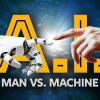
Breaking News
 Elon Tells Rogan the Real Reason Democrats are Prolonging the Government Shutdown [WATCH]
Elon Tells Rogan the Real Reason Democrats are Prolonging the Government Shutdown [WATCH]
 Newsom: Trump Is Trying to Rig the Election -- He Knows GOP Will Lose
Newsom: Trump Is Trying to Rig the Election -- He Knows GOP Will Lose
 There is zero justification for the Department of Justice's silence while the most serious...
There is zero justification for the Department of Justice's silence while the most serious...
 Gabbard Says Trump Has Ended America's Era Of 'Regime Change'
Gabbard Says Trump Has Ended America's Era Of 'Regime Change'
Top Tech News
 Graphene Dream Becomes a Reality as Miracle Material Enters Production for Better Chips, Batteries
Graphene Dream Becomes a Reality as Miracle Material Enters Production for Better Chips, Batteries
 Virtual Fencing May Allow Thousands More Cattle to Be Ranched on Land Rather Than in Barns
Virtual Fencing May Allow Thousands More Cattle to Be Ranched on Land Rather Than in Barns
 Prominent Personalities Sign Letter Seeking Ban On 'Development Of Superintelligence'
Prominent Personalities Sign Letter Seeking Ban On 'Development Of Superintelligence'
 Why 'Mirror Life' Is Causing Some Genetic Scientists To Freak Out
Why 'Mirror Life' Is Causing Some Genetic Scientists To Freak Out
 Retina e-paper promises screens 'visually indistinguishable from reality'
Retina e-paper promises screens 'visually indistinguishable from reality'
 Scientists baffled as interstellar visitor appears to reverse thrust before vanishing behind the sun
Scientists baffled as interstellar visitor appears to reverse thrust before vanishing behind the sun
 Future of Satellite of Direct to Cellphone
Future of Satellite of Direct to Cellphone
 Amazon goes nuclear with new modular reactor plant
Amazon goes nuclear with new modular reactor plant
 China Is Making 800-Mile EV Batteries. Here's Why America Can't Have Them
China Is Making 800-Mile EV Batteries. Here's Why America Can't Have Them
Gigawatt Scale Moon Base

On earth, a photovoltaic solar plant producing about one 1 GWh per year, will require around 2.8 acres of land. The moon has no atmosphere, so a 300-watt panel on Earth would produce 400 watts on the moon.
A GWh could be produced using 2 acres of land on the moon. An acre is 43,560 square feet (180 feet X 242 feet). In the SpaceX picture, it looks like they have solar panels on 200 acres. This would be about 100 GWh per year.
A rule of thumb on earth is 1kW per 100 square feet. On the moon with higher efficiency panels and better sunlight it could be 2 kW per 100 square feet. 200 acres would be about 170 megawatts. This could be 200 GWh per year. If the moon base solar power was six times bigger then it would be over 1 gigawatt of power. This would be 1200 acres or just under two square miles.
The system could weight 1 kilogram per kilowatt. In 2015, space-based solar power was 6.7 kilograms per kilowatt. The weight efficiency is being improved and simple lunar materials could be used to make some of the structures. This would mean transporting 1000 tons of material for a gigawatt of solar power on the moon. This would be ten refueled Starship landings for the main solar power systems and another five for construction machinery and other systems. There could another five Starship landings to provide batteries.

 China Innovates: Transforming Sand into Paper
China Innovates: Transforming Sand into Paper

